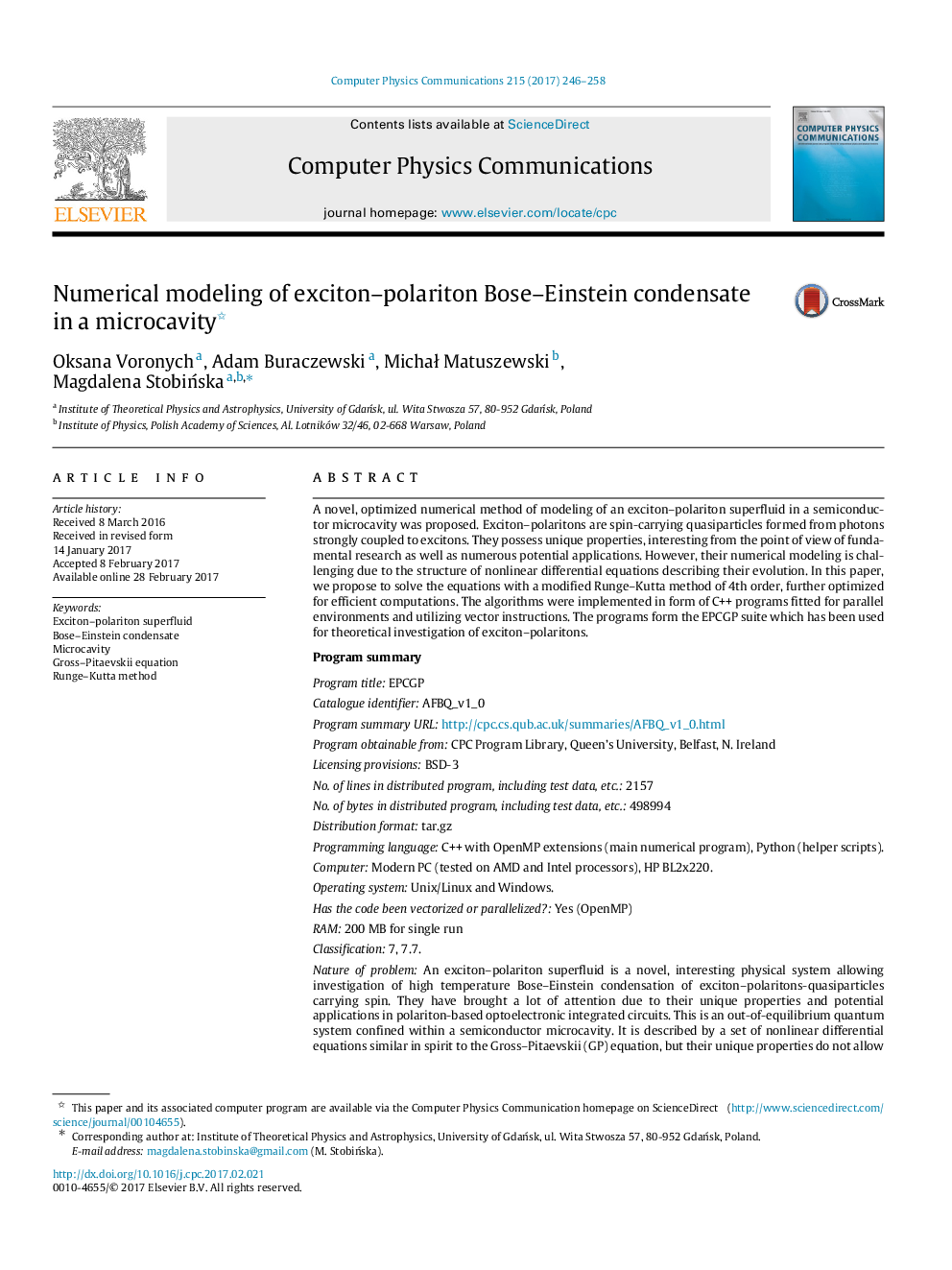| کد مقاله | کد نشریه | سال انتشار | مقاله انگلیسی | نسخه تمام متن |
|---|---|---|---|---|
| 4964383 | 1447808 | 2017 | 13 صفحه PDF | دانلود رایگان |
A novel, optimized numerical method of modeling of an exciton-polariton superfluid in a semiconductor microcavity was proposed. Exciton-polaritons are spin-carrying quasiparticles formed from photons strongly coupled to excitons. They possess unique properties, interesting from the point of view of fundamental research as well as numerous potential applications. However, their numerical modeling is challenging due to the structure of nonlinear differential equations describing their evolution. In this paper, we propose to solve the equations with a modified Runge-Kutta method of 4th order, further optimized for efficient computations. The algorithms were implemented in form of C++ programs fitted for parallel environments and utilizing vector instructions. The programs form the EPCGP suite which has been used for theoretical investigation of exciton-polaritons.Program summaryProgram title: EPCGPCatalogue identifier: AFBQ_v1_0Program summary URL:http://cpc.cs.qub.ac.uk/summaries/AFBQ_v1_0.htmlProgram obtainable from: CPC Program Library, Queen's University, Belfast, N. IrelandLicensing provisions: BSD-3No. of lines in distributed program, including test data, etc.: 2157No. of bytes in distributed program, including test data, etc.: 498994Distribution format: tar.gzProgramming language: C++ with OpenMP extensions (main numerical program), Python (helper scripts).Computer: Modern PC (tested on AMD and Intel processors), HP BL2x220.Operating system: Unix/Linux and Windows.Has the code been vectorized or parallelized?: Yes (OpenMP)RAM: 200 MB for single runClassification: 7, 7.7.Nature of problem: An exciton-polariton superfluid is a novel, interesting physical system allowing investigation of high temperature Bose-Einstein condensation of exciton-polaritons-quasiparticles carrying spin. They have brought a lot of attention due to their unique properties and potential applications in polariton-based optoelectronic integrated circuits. This is an out-of-equilibrium quantum system confined within a semiconductor microcavity. It is described by a set of nonlinear differential equations similar in spirit to the Gross-Pitaevskii (GP) equation, but their unique properties do not allow standard GP solving frameworks to be utilized. Finding an accurate and efficient numerical algorithm as well as development of optimized numerical software is necessary for effective theoretical investigation of exciton-polaritons.Solution method: A Runge-Kutta method of 4th order was employed to solve the set of differential equations describing exciton-polariton superfluids. The method was fitted for the exciton-polariton equations and further optimized. The C++ programs utilize OpenMP extensions and vector operations in order to fully utilize the computer hardware.Running time: 6h for 100 ps evolution, depending on the values of parameters
Journal: Computer Physics Communications - Volume 215, June 2017, Pages 246-258
